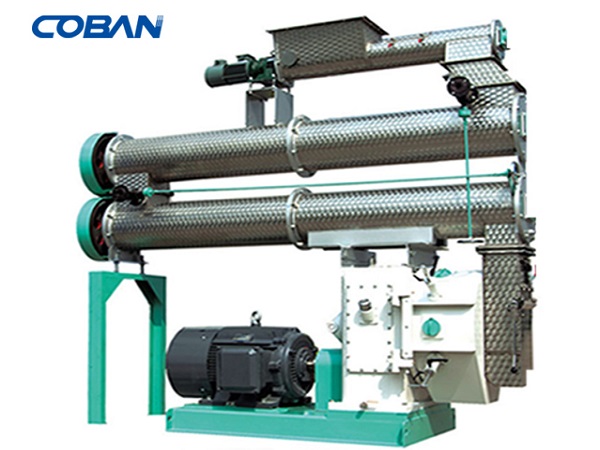How to deal with feed pellet machine failure
In the rapidly developing animal husbandry industry, the feed pellet machine plays a crucial role. It efficiently transforms powdered or fragmented feed into pelletized feed that is easy to store, transport, and digest by animals, directly impacting the operational efficiency of farms and the health of livestock.
- Feed Pellet Machine Selection Guide
- Feed pellet machine product model introduction
- Application scope of feed pellet machine in breeding
- How to deal with feed pellet machine failure
- How much is a sheep feed pellet machine?
- Key points in designing ring die for feed pellet machine
- What is cattle and sheep straw feed pellet machine
- Advantages and selection suggestions of Feed Pellet Machine
- Pellet feed machine, a complete feed production line
- Feed Pellet Machine: a powerful tool for pellet production
feed pellet machine: A Solid Support for Animal Husbandry and Fault Response Strategies
In the rapidly developing animal husbandry industry, the feed pellet machine plays a crucial role. It efficiently transforms powdered or fragmented feed into pelletized feed that is easy to store, transport, and digest by animals, directly impacting the operational efficiency of farms and the health of livestock. However, like any mechanical equipment, feed pellet machine are susceptible to faults due to long-term operation and improper management. This article aims to explore common faults in feed pellet machines, their causes, handling strategies, and preventive measures, providing a comprehensive guide for industry practitioners.


Identifying feed pellet machine Faults
The causes of feed pellet machine faults are diverse, but wear in the mechanical structure and transmission system is particularly prominent. Prolonged continuous operation, combined with material friction and impact, can lead to accelerated gear wear and even breakage, affecting the equipment’s power transmission and stability. Additionally, bearings, which support and rotate the machinery, are crucial. Their looseness or wear can exacerbate mechanical vibrations, reduce processing precision, and ultimately impact the quality of the feed pellets.
Fault Response Strategies
Maintenance of Mechanical and Transmission Systems
When facing faults in the mechanical structure or transmission system, the first task is to stop the machine and conduct a thorough inspection. Replace severely worn bearings promptly to ensure smooth rotation. If gears are damaged, decide whether to repair or replace them based on the extent of the damage to restore transmission efficiency. Regular lubrication and maintenance are also essential to reduce friction wear and extend the machine’s lifespan.
Rapid Resolution of Blockages
Blockages are another common issue in feed pellet machine, usually caused by excessive material moisture, uneven pellets, or incorrect feeding speeds. When a blockage is detected, stop the machine immediately and sequentially disassemble the feed inlet and discharge outlet to thoroughly clean out the accumulated material. For stubborn blockages, use specialized cleaning solutions to assist in clearing. After cleaning, reassemble the equipment and adjust the settings to ensure smooth discharge and appropriate pressure.
Accurate Diagnosis of Electrical Faults
Although less common, electrical faults can have significant impacts. Start by checking if the power lines and plugs are securely connected, without any loose connections or short circuits. Replace damaged wires or plugs promptly to ensure electrical safety. If the fault involves more complex circuits or control components, follow the equipment manual or seek professional guidance for diagnosis and repair.


The Art of Fault Prevention
Regular Inspections to Prevent Problems
Conducting regular inspections of the feed pellet machine is an effective way to prevent faults. By checking the wear of mechanical components, the status of the electrical system, and the effectiveness of the lubrication system, you can identify potential issues early and address them before they escalate.
Standardized Operation to Reduce Human Error
The professional skills of the operators directly impact the performance of the feed pellet machine. Therefore, it is crucial to provide comprehensive training for operators to ensure they understand the correct operating procedures and precautions. Reducing mechanical damage and faults due to improper operation will enhance the overall efficiency of the equipment.
Proper Use of Feed to Ensure Equipment Health
The quality and characteristics of the feed directly affect the operation of the feed pellet machine. Using high-quality, impurity-free feed materials, controlling appropriate moisture levels, and adjusting pellet size are key to preventing blockages and reducing wear. Additionally, ensure that the feeding speed matches the equipment’s processing capacity to avoid overloading and mechanical damage.
Conclusion
In summary, the feed pellet machine is a vital piece of equipment in the animal husbandry industry. Its stable operation is crucial for improving production efficiency and ensuring feed quality. By adhering to a principle of prevention and timely response, and through scientific maintenance, standardized operation, and proper feed usage, we can ensure that the feed pellet machine remains in optimal working condition. This will significantly contribute to the advancement of animal husbandry.








